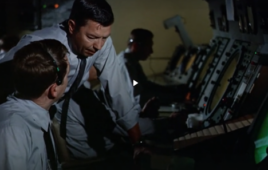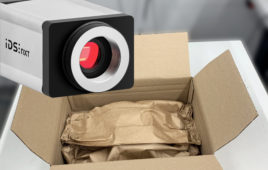… with a universal approach.
One of the persistent themes at Expo was the need to listen to the customer. From Cox President Pat Esser’s initial remarks on, there was repeated talk of understanding, anticipating and responding to the needs of end users.
Against that backdrop, we unveiled our Broadband Premises Installation and Service Guidebook, a 500-page tome that comprehensively covers every aspect of residential installation. Designed to help professionals prepare for two critical certifications – Broadband Premises Installer (BPI) and Broadband Premises Technician (BPT) – it details everything field professionals need to know to create satisfied customers and minimize or eliminate the expense of repeat visits.
But what’s important is not the guidebook itself, but how it came about and the very real needs it addresses. In the end, the origins of the guidebook concept, the contributions that went into it and the end product speak volumes about the recognition that the industry needs standard operation procedures for the field work that is on the front lines of the industry.
For too long in the deep past, cable installations varied from company to company, from region to region, and sometimes even from installer to installer. The “right way” of providing service resulted in a wide variety of configurations that worked for individual customers. As cable networks have become more complex, and as the services have moved from entertainment to critical telecommunications, operators have recognized that standards-based “best practices” are a must for efficiency in installations, upgrades and troubleshooting.
A universal approach to problem-solving enables faster installations, repairs and upgrades, as well as fewer mistakes and greater flexibility within the workforce. In conversations with operators and in research among a cross-section of the cable engineering and operations workforce, we heard the need for bringing all of that thinking together into an easily digested, yet authoritative volume. Consider that in a standardized world:
• Technicians who need to troubleshoot or upgrade an existing installation do not need to decipher previous work, saving valuable time and increasing the number of trouble tickets that can be handled.
• Technicians who are working with configurations that adhere to the best practices they know are more prone to effect trouble-free work, resulting in more satisfied customers and significantly reduced truck roll expenses.
• Technicians who are trained in standardized, best practices installation and troubleshooting increase their own value by providing faster, more reliable service, and by having the flexibility to transfer their skills to new locations should employment needs dictate.
Why is this so important now? Most notably, it’s because of the leadership role the industry has taken in revolutionizing telecommunications over the past decade and a half. The voice and data services that operators offer today have become essential to the lives of our customers. As cable continues its pursuit of the higher-margin business services opportunity, the need for quality and reliability will be greater still.
At the same time, the premises networks themselves have become exponentially more complicated. MoCA technology, the bi-directional communication between multiple settop boxes, and the ability to integrate connected devices into the home network have raised the level of sophistication needed in addressing home or business installations.
SCTE’s Professional Development team addressed the needs of operators and technicians by collaborating with subject matter experts from throughout the cable telecommunications community.
The 15 modules run the gamut, from an introduction to cable networks and installation to chapter-specific discussions on the installation of video, high-speed data and voice equipment. Just as important, the guidebook devotes significant space to the customer service skills professionals need as the ambassadors to our subscribers.
It’s important to note that the guidebook is not an end in itself, but the beginning of a new set of in-depth resources for engineering and operations professionals seeking to increase their skills and advance their careers. During the coming months, our Professional Development team will be conducting the research required to begin development of equally valuable books that will address such areas as Standard Measurements Recommended Practices and others.
And while the guidebook as a resource is important to the industry, what’s just as notable is how it represents yet another new step into uncharted territory for the SCTE. Like SEMI, our SCTE-Tuck Executive Leadership Program at Dartmouth, and our partnerships with the Georgia Tech College of Management and Fort Hays State University, the Broadband Premises Installation and Service Guidebook is the product of close discussion with operator and vendor partners.
Ultimately, it’s just as Esser said in the bright lights of SCTE Cable-Tec Expo late last year: “It’s by listening to our customers, by understanding how we can meet their needs, that we can develop the tools that are necessary to help our members to advance and the industry to grow.”
E-Mail: [email protected]
Filed Under: Cables + cable management, Industry regulations




